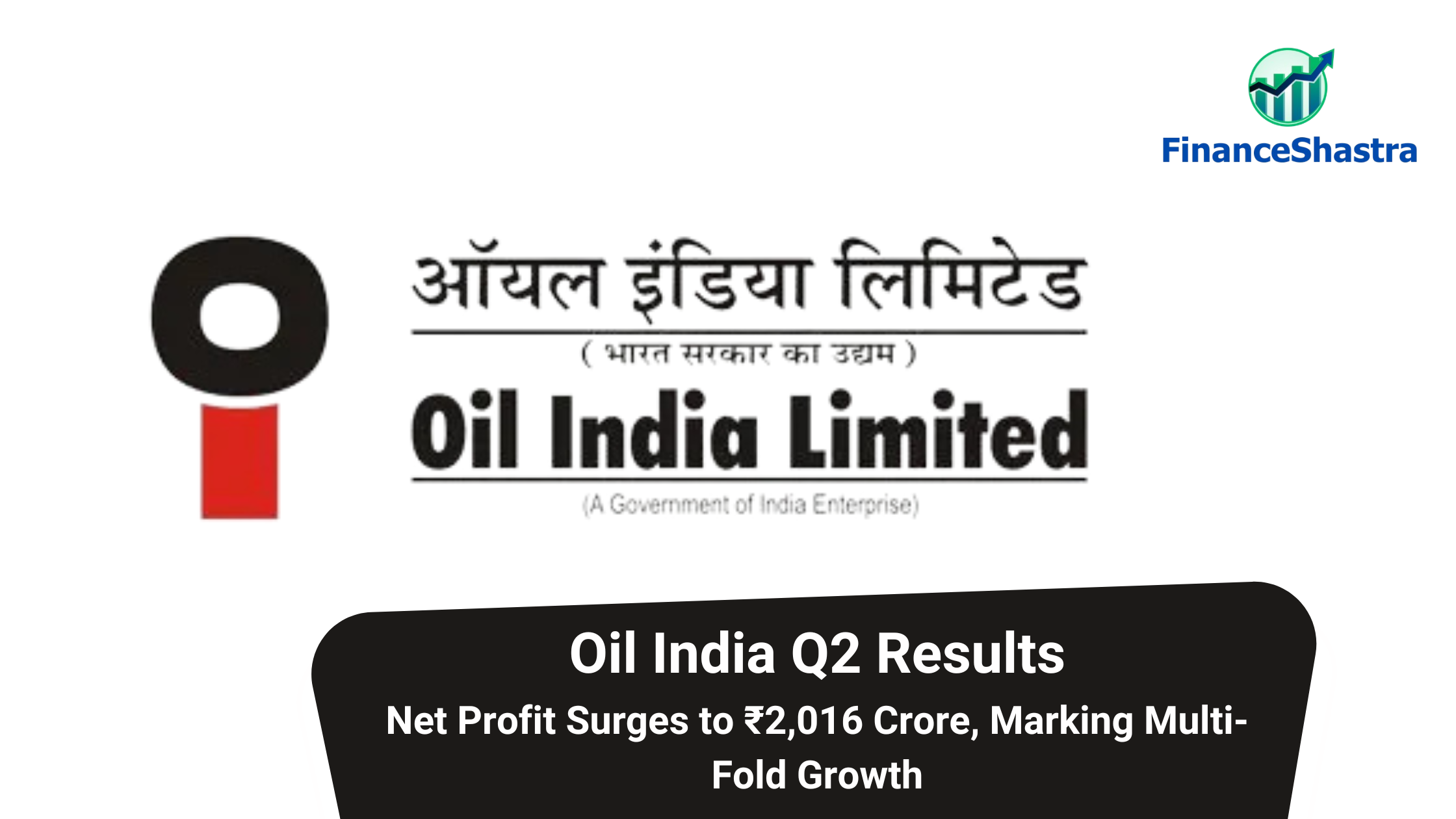Oil India Q2 Results: Net Profit Surges to ₹2,016 Crore, Marking Multi-Fold Growth
Company Overview
Oil India Ltd. (OIL) is one of the largest national oil and gas companies in India, primarily engaged in the exploration, development, and production of crude oil, natural gas, and liquefied petroleum gas (LPG). Founded in 1959 and headquartered in Duliajan, Assam, the company plays a crucial role in securing India’s energy needs through its significant contributions to domestic oil and gas production. It operates under the Ministry of Petroleum and Natural Gas and has international interests as well. OIL operates a large network of pipelines, including a 1,157-km trunk pipeline in the North East, which transports crude oil from Assam to various refineries. The company has reserves and production blocks across India, as well as strategic international assets in locations like Russia, Mozambique, and the United States.
Industry Outlook
The Indian oil and gas industry is poised for robust growth, fuelled by rising energy demands, government initiatives for energy security, and ongoing reforms aimed at modernising the sector. With India being one of the largest consumers of oil globally, the industry is a critical part of the country’s energy landscape. The country’s oil demand is projected to double by 2040, and natural gas demand is expected to grow by 4-5% annually over the next decade. The government’s target to reduce oil import dependence by 10% by 2022 and achieve 15% natural gas share in the energy mix by 2030 underscores the importance of boosting domestic production.
Business Mix
- Crude Oil: The company has continued to improve its crude oil production, which is higher by 4.79% in quarter ended 30 September 2024, at 0.875 MMT from 0.835 MMT in the quarter ended 30 September 2023. Crude oil production has increased by 5.5% in half year ended 30 2024 at 1.746 MMT from 1.655 MMT in the half year ended 2023.
- Natural Gas: The sale of natural gas during FY 2023-24 was 2521 MMSCM as compared to 2507 MMSCM during the previous year. The nation’s commitment is to increase the share of natural gas in the energy basket from the current level of 6% to 15% by 2030.
- LPG: LPG Filling Plant was in operation for 292 days. Revenue earned by selling LPG during FY 2023-24 was ₹ 170.40 crores. Net realisation of condensate was ₹ 34.13 crores in the FY 2023–24 as against ` 52.15 crore in the previous year.
- Pipeline: The crude oil pipeline transported 6.74 MMT of crude oil as against 6.79 MMT in the previous year. The company operates a total network of 1,243 km of crude oil pipeline.
Quarterly Highlights
- Revenue of ₹7247 crore in Q2 FY25 is down by 3.33% YoY from ₹7497 crore in Q2 FY24.
- EBITDA of ₹2536 crore in this quarter at a margin of 35% compared to 46% in Q2 FY24.
- Profit of ₹2069 crore in this quarter compared to₹640 crore in Q2 FY24.
Business Highlights
- Average crude oil price realization for Q2 FY25 is $79.33 per barrel and $86.86 per barrel for Q2 FY24, decreased by 8.67%.
- Out of ₹28,000 crore capex, ₹1400 crore is for E&P business, and NRL has debt of ₹11,500 crore.
- For City Gas Distribution (CGD) bids won for 9 areas and functioning are Kolhapur, Ambala, and Kurukshetra.
- From April 2025, we will be getting a $0.25 premium over. So it would be averaging $6.75 this coming April.
- Phase 1 for DNPL is adding 55 kilometres of new capacity, and after achieving it, Phase 2 will begin.
SWOT Analysis
Strengths:
- Extensive Domestic Market Presence
- Strong Government Backing
- Well-Established Pipeline Infrastructure
Weaknesses:
- Heavy Reliance on Crude Oil Prices
- Outdated Infrastructure in Key Areas
- High Operational Costs
Opportunities:
- Rising Demand for Natural Gas
- Expansions in Renewable Energy Initiatives
- Supportive Government Policies
- Potential for Strategic International Partnerships
Threats:
- Increasing Environmental and Regulatory Scrutiny
- Heightened Market Competition
- Risks from Geopolitical Uncertainty

